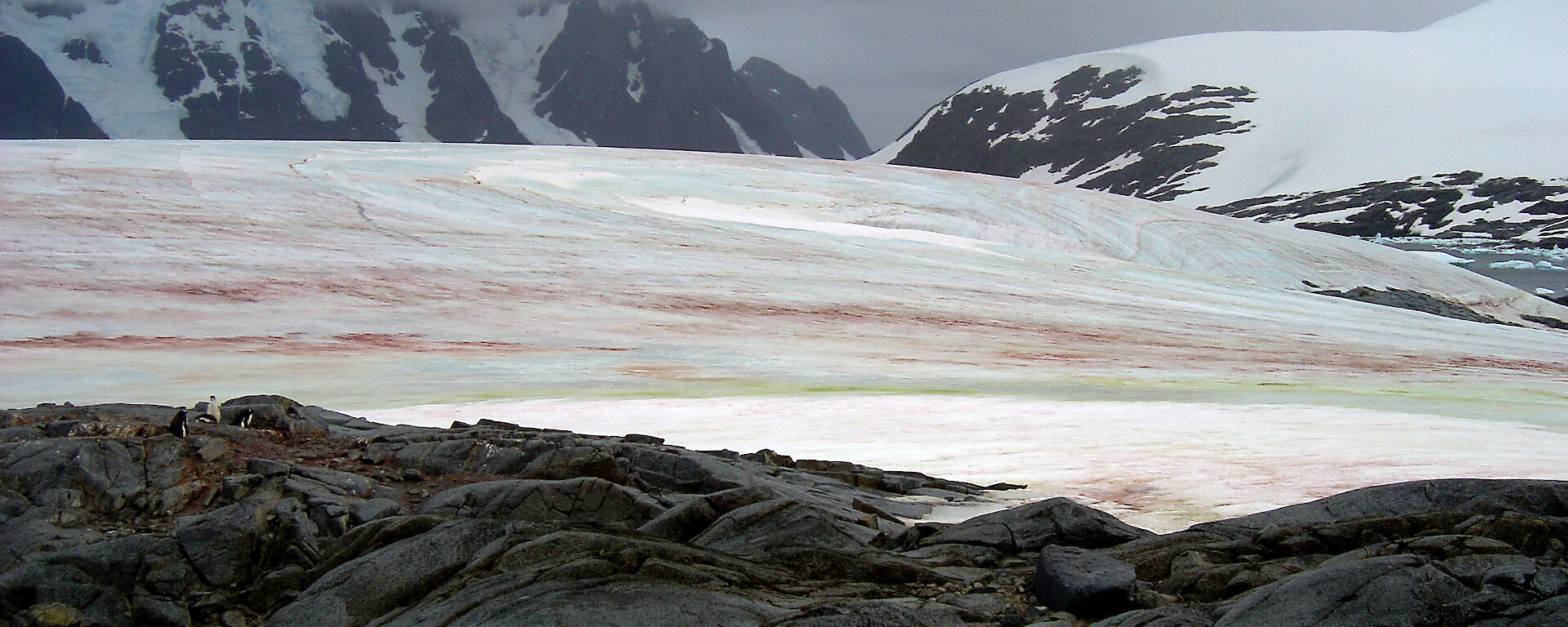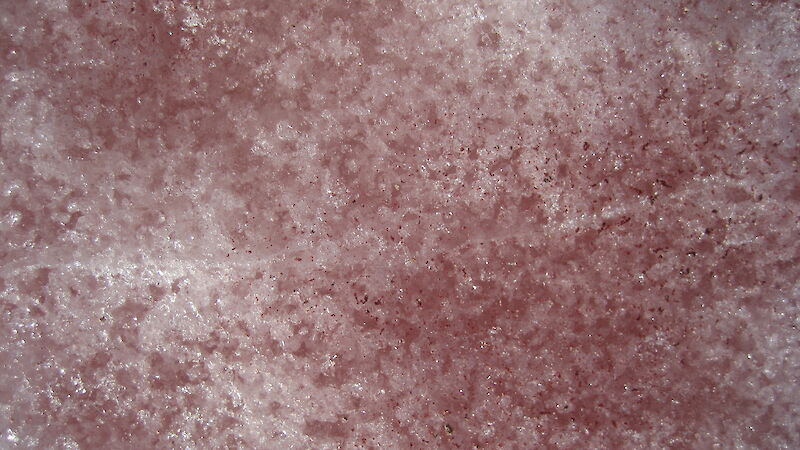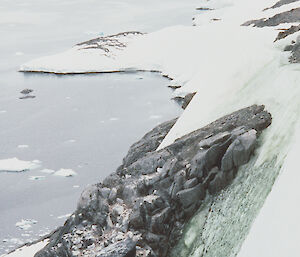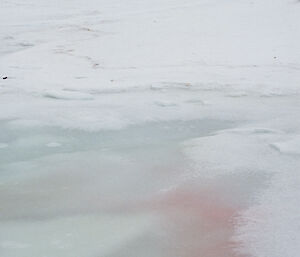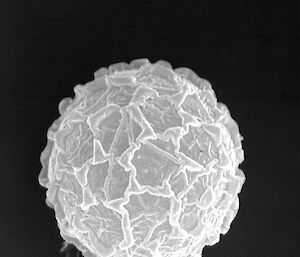Large blooms in the summer months can reach cell concentrations of 105 to 106 cells per mL. Snow algae can spectacularly colour whole banks of snow red, orange, green or grey.
It is thought chlamydomonads dominate species of snow algae. This group of green algae is characterised by single cells with two flagella at their anterior ends. Species from other algal groups are also important. The dominant alga in many of the glaciers around the world is a saccoderm desmid Mesotaenium berggrenii. This is an alga that colours the snow grey.
Origins and adaptations
Snow algae were probably derived from species of soil or aquatic algae. Factors like nutrients, pH, salinity and sunlight govern their distribution. These algae have adapted to their harsh environment.
Adaptations include pigments, polyols (sugar alcohols, e.g. glycerine), sugars and lipids (oils), mucilage sheaths, motile stages and spore formation A few species are common worldwide. Most are restricted to either the Northern or Southern Hemispheres.
A life cycle for survival
Many snow algal species have a complicated life cycle involving different cell types.
Vegetative and/or motile cells are usually green in colour. Immotile spores or cysts may be red, orange or yellow-green in colour. These pigments protect the cells from light and UV radiation damage during summer. Pigments may take the form of iron tannin compounds, as in M. berggrenii, or orange to red-pigmented lipids as in the majority of the snow algae. The different cell colours give rise to different snow colours.
Immotile spores usually have thick walls and large amounts of lipid reserves, polyols and sugars. These spores can withstand summer and winter temperatures, and loss of moisture in summer. These conditions would kill normal vegetative cells.
The motile stages enable snow algae to re-colonise from germinating spores left behind on the soil. This is also when they find the best position in the snow/ice column for photosynthesis.
The cells of some species also secrete copious amounts of mucilage. This substance enables them to adhere to one another and to snow crystals. This prevents meltwater from washing away the cells. The mucilage also forms a protective coat and delays desiccation. It may have an extra function as an UV shield.

